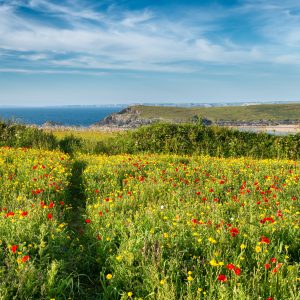The Glover Report: Transforming our National Landscapes – By Penny Anderson CEnv FCIEEM
BLOG
 My evidence, whilst a member of the Peak Park National Park Authority (NPA), is largely incorporated in this report. That means my Peak District experience is not unique, but representative of what has been happening throughout English National Parks (NPs). That’s sad, as it shouldn’t have happened.
My evidence, whilst a member of the Peak Park National Park Authority (NPA), is largely incorporated in this report. That means my Peak District experience is not unique, but representative of what has been happening throughout English National Parks (NPs). That’s sad, as it shouldn’t have happened.
The Glover report was commissioned in response to the Government’s 25 Year Environment Plan. The review has been open and inclusive in examining the success or otherwise of the English National Parks and Areas of Outstanding Natural Beauty (AONBs). The key message is, ‘Vigorous and clear. Though there’s much that is good….It falls far short of what can be achieved and what the people of our country want.’
This excellent report recommends a coordinated and overarching approach to protected landscapes through a new National Landscapes Service[1] intended to bring together, as one family, National Parks, Areas of Outstanding Natural Beauty (AONBs), National Forests and National Trails, ‘To inspire, join-up, look-out, drive action and hold each other to account’. Working closely with Natural England (NE) in relation to Sites of Special Scientific Interest (SSSIs) and National Nature Reserves (NNRs), it would set the vision and strategy for the 44 National Landscapes (NPs and AONBs – with the latter changing to National Landscapes), drive collaboration, ensure best practice, promote consistent and high quality standards, and oversee a new professional ranger service and visitor experience. This Service would be led by a small, high calibre board of inspirational leaders appointed by Defra.
Glover’s Report is firm about biodiversity. NPAs, ‘Are currently unable to fulfil their statutory purpose to conserve and enhance the natural beauty, wildlife and cultural heritage of their areas’. Despite good examples, NPs and AONBs have not managed to buck the negative trends affecting the UK’s wildlife, largely resulting from Government policies. These landscapes should feel more special and consist of resilient, flourishing ecosystems, providing a range of environmental goods. They should lead the way in nature recovery in line with the 25 year Environment Plan.
The Report recommends strengthening the first purpose to, ‘Recover, conserve and enhance natural beauty, biodiversity and natural capital, and cultural heritage’ to demonstrate a new statement of importance for landscape, nature and people.
Assessing the natural resources and their condition in the National Landscapes should form the foundation of Management Plans, including an inventory of Natural Capital. There is currently a distinct lack of understanding and data on the state of nature in these landscapes. Glover sees such assessments as needing regular updating, but also providing the basis for nature recovery and future agri-environment support. Government is currently developing Local Natural Capital Recovery Plans and Glover envisages these at the National Landscape level providing the basis for Management Plans.
Glover seeks strengthened Management Plans to lead and implement natural recovery, along with increased statutory recognition so that public bodies have ‘to further’ rather than ‘have regard to’ these. He wants an overall plan vision with detailed ambitions to reflect the strengthened purposes. National Landscapes should form the backbone of Nature recovery networks, which would include measureable steps towards nature-friendly farming, potential for natural capital, tree planting, peatland restoration, connections beyond their boundaries and areas where wilder approaches can take off. Wilderness experiences in different scenarios, not necessarily extensive, are needed. Glover wants a balance, not conflict, where cultural traditions, including farming, need to be sustained. He sees a central place for National Landscapes in the new Environmental Land Management Services.
National Landscapes should take a major role in enhancing the resilience of the Nature Recovery Network based on Lawton’s principles. He considers that currently these landscapes do not readily provide biodiversity benefits over and above SSSIs and Local Wildlife Sites. Glover envisages large areas of high-quality wildlife habitat at the centre of integrated effective networks combined with objectives for landscape, farming, ecosystem services and people involvement. Glover also wants National Landscapes to take a leading role, and faster, in response to the climate crisis.
Improvements of planning management in NPAs are suggested, along with a stronger voice for AONBs as a consultee. New advice is sought from the National Planning Policy Framework (NPPF) to increase the emphasis on National Landscapes’ importance.
I have focused on the ecological/environmental aspects, but there are other recommendations too: a stronger mission to connect all people with our national landscapes, supported and held to account by the new National Landscapes Service, including staying in a National Landscape for every child, increased visitor ethnic diversity, enhanced landscapes and access for the nation’s health and wellbeing, expansion of volunteering, better and co-ordinated signs and information for visitors, a comprehensive ranger service for all our landscapes, supporting leadership in sustainable tourism, integration of the National Landscapes family including National Trails, and the potential for expanding open access rights.
The report seeks to change the NPA current duty to foster the social and economic wellbeing of local communities as a third statutory purpose. A new National Landscapes Rural Housing Association should build affordable homes to support local communities. A more active role in fostering, co-ordinating and promoting low-carbon and accessible travel is recommended.
 The review supports future designation of The Chilterns, The Cotswolds, Dorset/East Devon and the Forest of Dean AONBs as new NPs. A new National Forest status is recommended for the Sherwood Forest area. New connections between nearest National Landscape neighbours are envisaged which could, eventually, allow some designations to flow into each other.
The review supports future designation of The Chilterns, The Cotswolds, Dorset/East Devon and the Forest of Dean AONBs as new NPs. A new National Forest status is recommended for the Sherwood Forest area. New connections between nearest National Landscape neighbours are envisaged which could, eventually, allow some designations to flow into each other.
The review also welcomes and supports initiatives towards National Parks Cities in London and West Midlands, with a potential National Marine Park in Plymouth Sound, but wanted simultaneous restoration and enhancement of Green Belts’ ecological quality in these City Parks, rendering them more beautiful, full of nature and more accessible.
The Review’s final chapter focuses on ways of working. It wants stronger purposes in law for national landscapes and strengthened purposes, powers and resources for AONBs. Reformed governance is recommended, along with a new financial model providing more secure resources in a more enterprising, co-ordinated fashion.
I found Glover’s report hopeful, inspiring, positive and heartening. It re-states much that is in the State of Nature reports in simple but captivating language. It is inclusive,  including our historic and cultural environment. It sets out an achievable vision and provides a range of means for realising it, although with generally little detail. It raises the bar profoundly for wildlife and natural capital in our National Landscapes. We should support it. Indeed, we should be working towards it now in expectation that a Government will eventually see fit to implement Glover’s vision.
including our historic and cultural environment. It sets out an achievable vision and provides a range of means for realising it, although with generally little detail. It raises the bar profoundly for wildlife and natural capital in our National Landscapes. We should support it. Indeed, we should be working towards it now in expectation that a Government will eventually see fit to implement Glover’s vision.
The full report or a summary can be downloaded here.
By Professor Penny Anderson CEnv FCIEEM, Penny Anderson Associates (retired), former CIEEM President.
[1] Key recommendations are in bold
Blog posts on the CIEEM website are the views and opinions of the author(s) credited. They do not necessarily represent the views or position of CIEEM. The CIEEM blog is intended to be a space in which we publish though-provoking and discussion-stimulating articles.
